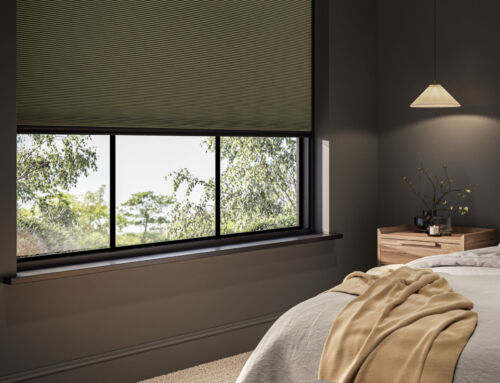You may lower the amount of energy your house uses on a daily basis by doing something as easy as adding window shades. Blinds are slatted window treatments with vertical or horizontal slats. They’re constructed of materials including PVC, plastic, polyester, and wood, and they’re easy to move and alter. They’re not only decorative, but they also control light and provide seclusion.
Understanding the Types of Window Blinds
Most blinds include a cord on one side that allows you to raise and lower them. A rod on the opposite side allows you to alter the tilting of the slats and the amount of light that comes in. These blinds also come from a variety of materials, each with its own set of advantages. Bamboo blinds, Vertical blinds, Wooden blinds, Roman blinds, and Roller blinds are some of the most common types.
Their most notable contribution is their ability to make your home more energy-efficient. Regardless of which design you choose, you’re assured that they will reduce both your cooling and heating bills.
Taking Advantage of Your Blinds’ Features
Knowing when to open and close your blinds is crucial to conserving energy. As previously said, sunny winter days are ideal for using passive solar heating to warm your home. This is especially useful in areas with floor-to-ceiling glass windows, which absorb heat well.
The need to use your air conditioner increases as the temperature rises in the summer. When your AC is turned on, keeping the blinds drawn during the day prevents sunlight from heating the room.
Closing them at night helps insulate your windows from the cold outside. This reduces the need for your heater to run. Simply ensure that your blinds are correctly closed at night, as this is when the most heat is lost.
Buying Window Blinds Control the Heat That Enters Your Home
On the hottest days, it’s tempting to keep the air conditioner on, regardless of the electricity bill. While some sunlight is healthy, too much sun heats your interiors to the point of pain.
You have complete control over how much sunshine enters your home with window blinds. This keeps your interiors colder and lowers your air conditioning expenditures significantly, along with other benefits:
- They Retain Heat during Cold Months: In the winter, window blinds are just as useful. They considerably limit heat loss when fitted snugly against the window frame. They can also be left open during the day and closed at night to retain heat. There’s a lesser need for your furnace to be turned on.
- They Store Heat during the Day: On a hot day, when the blinds are closed, the heat accumulated from the sun is trapped between the window treatment and the glass. When the temperature drops in the evening, open the blinds to let the heat in. This extra heat keeps the room warmer and prevents you from having to turn up the heat.
- They’re Energy-Efficient: When blinds are opened at the right times, they can save even more electricity. Consider a bright winter afternoon when the temperature begins to dip, but the sun continues to shine. Allowing sunlight into your home and maintaining a suitable temperature inside is made possible by keeping the blinds open.
Conclusion
Investing in high-quality window treatments is a low-cost approach to improving your home’s energy efficiency. Window blinds are long-lasting and easier to maintain than other window treatments.
They’re also a fantastic method to cut down on your carbon footprint. With so many options, it’s easy to choose ones that fit your needs and complement your decor.
If you’re looking for a blinds supplier in Nuneaton, Shady Blinds is among the best in the area. We supply and install made-to-measure blinds, curtains, and shutters. Visit our gallery today to see our designs!






Leave A Comment